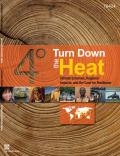The cost of energy in Eastern Europe and Central Asia, as elsewhere, is an important policy issue, as shown by the concerns for energy affordability during the past harsh winter. Governments try to moderate the burden of energy expenditures that is experienced by households through subsidies to the energy providers, so that households pay tariffs below the cost recovery level for the energy they use. Balancing competing claims- fiscal and environmental concerns which will push for raising energy tariffs on the one hand and affordability and political economy concerns which push for keeping tariffs artificially low on the other is a task that policy makers in the region are increasingly unable to put off. While challenging, the reforms needed for this balancing act can build on much that has been learned in the last decade about improving the effectiveness of social assistance systems and increasing energy efficiency.
This report focuses on the results of a public-private dialogue in the Greater Mekong Subregion (GMS). The report outlines the key findings and recommendations from the event held in Bangkok, Thailand, in June 2013, and provides insights into the key opportunities emerging from the transition to a green economy in the region. Initiated by the OSLO Consortium, the public-private dialogue was co-organised by the Global Mechanism, the Asian Development Bank, UNEP, UNDP, FAO and WWF.
In the first post-transition decade after the fall of communism, Europe and Central Asia (ECA) moved its economy from plan to market. In the second decade, the 2000s, it moved from social division to inclusion. The region has an opportunity to use the third decade, the 2010s, to move from brown to green growth making production and consumption more sustainable, increasing quality of life, and reducing impacts on the climate. Lowering climate change risks in ECA will involve many different actions that fall broadly into three areas. Some, like energy efficiency improvements, are often economically beneficial regardless of climate concerns. Others, like creating a good business environment for green enterprises, are investments that create new growth opportunities. Finally, actions like expanding wind and solar energy will have net costs for some time but are essential to tackling climate change. A simple framework helps guide climate action. The priorities are to use energy more efficiently, use cleaner energy, and manage natural resources better.
In 2005, the concept of green growth was introduced in the Asia-Pacific region as a strategy for sustainable growth in developing countries. This roadmap, produced by the United Nations Economic and Social Commission for Asia and the Pacific (UNESCAP), is intended for the use of member states to help policymakers find win-win strategies for promoting growth and reducing carbon emissions. Drawing upon innovative approaches, particularly from the Republic of Korea, this manual lays out the challenges, strategies and policy options of green growth in several critical sectors.
The document is divided into two parts, with additional case studies and fact sheets available via CD-ROM. Part one presents an overview of the opportunities and challenges the region faces regarding low carbon green growth. It also discusses the system change required to shift focus to this new development path. Part two of the roadmap shows how to start the process of pursuing green growth through five different tracks, outlined below, which are seen as core elements of necessary systemic change:

This report focuses on the risks of climate change to development in Sub-Saharan Africa, South East Asia and South Asia. Building on the 2012 report, Turn Down the Heat: Why a 4°C Warmer World Must be Avoided, this new scientific analysis examines the likely impacts of present day, 2°C and 4°C warming on agricultural production, water resources, and coastal vulnerability for affected populations. It finds many significant climate and development impacts are already being felt in some regions, and in some cases multiple threats of increasing extreme heat waves, sea level rise, more severe storms, droughts and floods are expected to have further severe negative implications for the poorest. Climate related extreme events could push households below the poverty trap threshold. High temperature extremes appear likely to affect yields of rice, wheat, maize and other important crops, adversely affecting food security. Promoting economic growth and the eradication of poverty and inequality will thus be an increasingly challenging task under future climate change.
